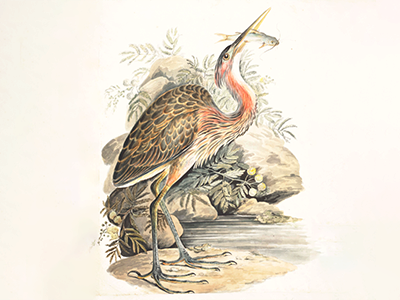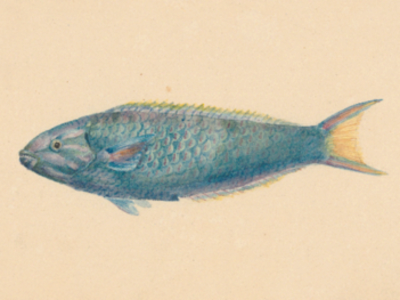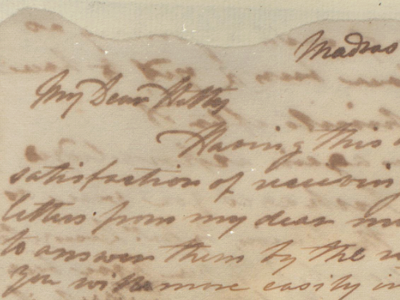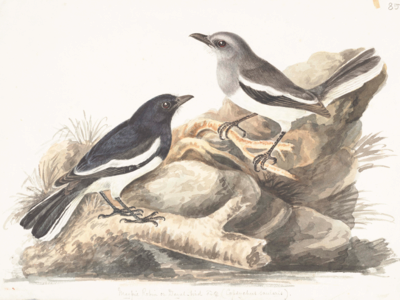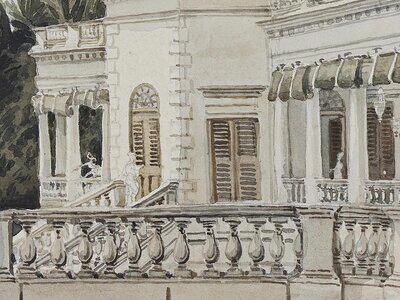The Watercolours
About the paintings
There are over 200 watercolours painted by the sisters, in Madras and environs, plus a few painted by Mary Symonds on the voyage home, held in public collections. From the numbering system on Elizabeth Gwillim's watercolours of birds, it is evident that many others have been lost or are in private collections. The sisters painted in the European watercolour tradition. Their training under the noted British topographical artist George Samuel encouraged them to reproduce views as accurately as possible; their interest in natural history, landscape and architecture led them to make highly detailed images.
Other hands
Not all the watercolours are painted by the sisters. The sisters sent their drawings back by ship to friends and family in England; unfortunately, there was no guarantee that they would be safely delivered. Their friend Dr Anderson urged that some of the natural history watercolours be copied 'before they go home that they may not be entirely lost if an accident should happen'.
The copies

Many of the fish paintings have Tamil inscriptions written in Urdu script. Unfortunately we cannot identify the artist. Scholars think that Mary's original paintings may have been copied by an artist associated with the court of the Nawabs of the Arcot in Triplicane, Chennai.
Collaborations between European naturalists and Indian artists were not uncommon. Between 1777 and 1782 in Kolkata (Calcutta), Lady Mary Impey, wife of the Chief Justice Sir Elijah Impey, commissioned over 200 paintings of birds and animals from three Mughal-trained artists: Shaikh Zain ud-Din, Bhawani Das, and Ram Das.
Based on information provided by Shyamal Lakshminarayanan, biologist, Bengaluru, and Professor Torsten Tschacher, Berlin.
Digital images of all the watercolours are included in the Collections on this website. Collections also include artwork and photographs from other sources.
